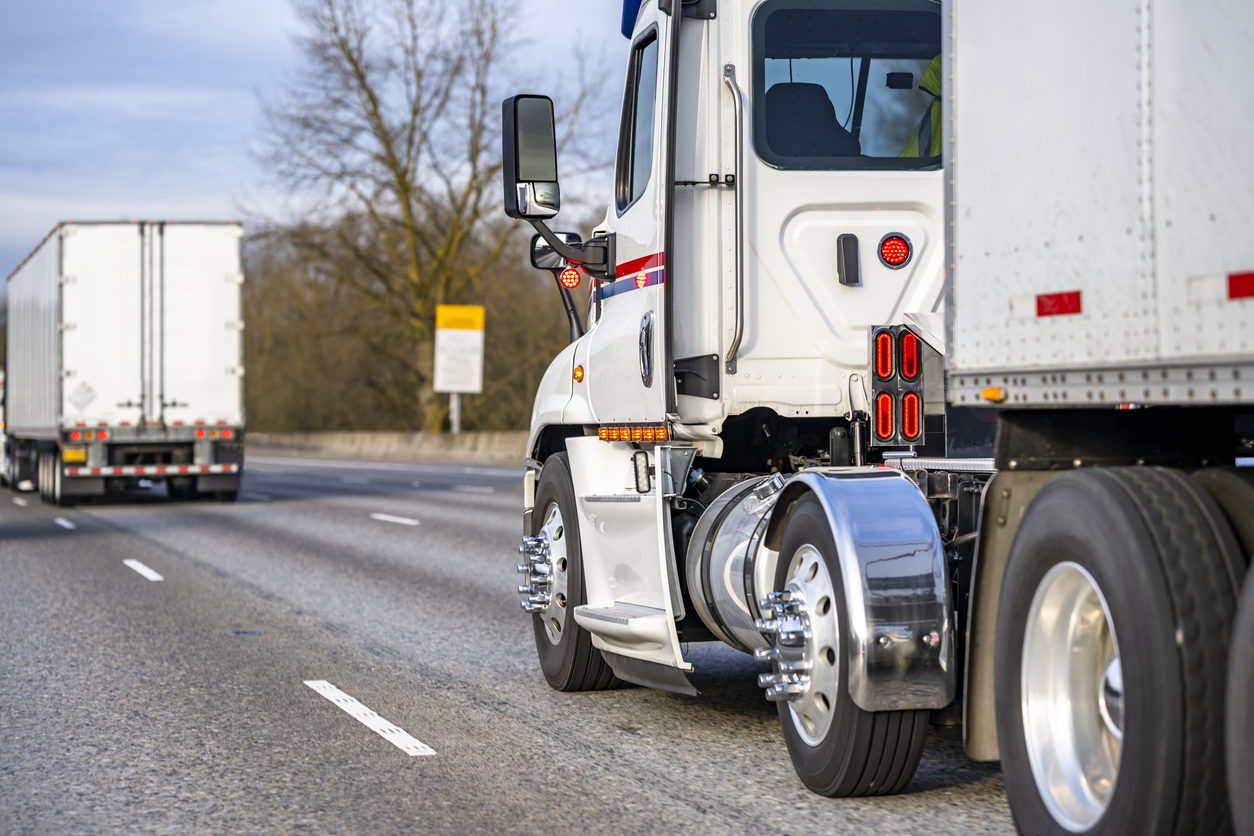
Ensure the financial security of your business with our commercial insurance for trucks, designed to cover the costs arising from vehicle accidents during the operation of company-owned trucks for work purposes. Tailored for trucks utilized in business activities, this commercial auto insurance safeguards your small business against property damage and medical expense claims, even in the unfortunate event of a fatal accident.
At The Daniel & Henry Company, we recognize the significance of minimizing trucking insurance expenses while safeguarding your bottom line. Our commitment to safety protects lives and contributes to cost savings. We offer specialized safety compliance and risk management solutions to meet the unique needs of your trucking business. Our team of industry professionals in transportation collaborates with you to instill a Culture of Safety within your terminal and on the road. Considering ten crucial factors, we strive to provide our customers with the most competitive rates…
- History Of Previous Coverage/Credit Score – Your insurance provider thoroughly assesses your eligibility by scrutinizing your insurance history, payment records, and any prior policy cancellations, investigating the reasons for such terminations. If non-payment is a factor, it may lead to a higher premium. Additionally, your credit score significantly influences your premium cost. Taking proactive measures, such as timely bill payments, addressing credit card debts, and promptly settling accounts, can enhance your creditworthiness, reducing the risk of an elevated premium and positively impacting your insurance costs.
- Driver Records – Possessing a clean driving record is akin to holding a golden ticket. Beyond securing lower rates, it is a testament to a driver’s responsible conduct on the road. Nevertheless, in the event of accidents or violations, all is not lost. Finding the ideal provider with competitive rates may require more effort, but hope remains for securing suitable coverage despite past incidents.
- Driver Employment History – Drivers with prior experience in trucking companies and extensive service tenure are perceived as stable employees due to the minimal gaps in their employment history, which suggests a wealth of knowledge in handling equipment and underscores their reliability and commitment to the profession.
- State Regulations – Every state leverages a unique set of local ordinances and regulations that demand compliance from trucking companies. It becomes crucial to chart the driving routes for your trucks, considering that mileage becomes a significant factor. The more miles a truck accumulates the greater the impact on your premium. If a truck ventures out of state, a higher premium gets levied to account for interstate expenses. Careful route planning is essential to navigate the regulatory landscape and manage premium costs effectively.
- Driving Locations – Different from state regulations. The state in which you operate influences the insurance coverage of your truck. Different states have varying requirements for insurance coverage, with some mandating higher levels than others. If your trucks traverse routes recognized as risky or hazardous, you might incur elevated premiums. Factors contributing to classifying routes as risky or dangerous include weather conditions, population density, road conditions, and the nature of the terrain, such as navigating through mountainous regions versus plains.
- Type of Cargo – Certain cargo types pose a higher risk of theft or damage, increasing company insurance costs. For instance, transporting food items is generally considered less risky than transporting electronics, jewelry, or even more hazardous materials like flammables. The varying degrees of risk associated with different cargo types influence the insurance premiums, with insurers factoring in the susceptibility of the cargo to potential theft or damage when determining coverage costs.
- Cargo Value – Elevated insurance rates are directly tied to the increased value of your cargo. The rationale behind this correlation is that higher cargo value translates to more significant stakes in the event of any unforeseen incidents impacting your load.
- Safety Rating – The insurance rates for your trucking company can be influenced by its safety rating or CSA score. Insurance providers prioritize safe companies and often extend lower rates to those with commendable safety ratings. To ascertain your company’s CSA score, you can verify it through the Federal Motor Carrier Safety Administration (FMCSA) if you need more clarification about your current standing.
- Age of the Driver – Similar to standard car insurance, insuring younger drivers—typically 25 or below—incurs higher costs due to their perceived higher risk than seasoned veteran drivers with more extensive driving experience.
- Age of the Truck – Insurers may perceive older trucks or equipment not in optimal condition as a higher risk to cover. Older trucks, especially poorly maintained ones, are deemed more prone to accidents or breakdowns, resulting in increased costs for insurance companies when claims are submitted. Conversely, a well-maintained newer truck is considered less risky, leading insurers to offer lower rates, akin to the principles applied in regular automobile insurance.
Want to learn more about keeping trucking insurance costs down? Contact The Daniel & Henry Company to speak with one of our transportation industry professionals. Contact us online or call our office at 1-877-406-5915.


